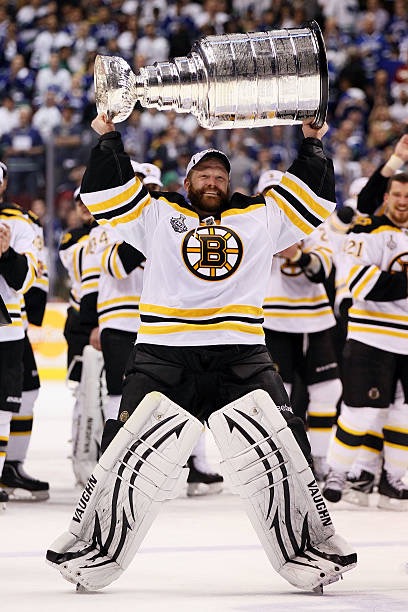The start of the Bruins season has been an emotional drain on Boston hockey fans. Failing to scrounge up back-to-back wins at any point during the season, the Bruins have not looked how we hoped. They give us hope, only to let us down a few nights later. What’s the problem with this years team? Why don’t we see the same championship potential from a Bruins team, consisting of many whom actually played on the 2011 Stanley Cup championship team? Let’s break it down…
A LACK OF CHEMISTRY
One thing common among all championship teams, really for any sport, is a strong chemistry on the ice, field, etc. When I was growing up near Chicago, I was blessed to be smothered with countless hockey championships, at the hands of the Chicago Blackhawks. The trust between defensive pairing, Duncan Keith and Brent Seabrook, was immense. It created a contagious chemistry across all red sweaters. Although superstars themselves alone, combining offensive forces like Patrick Kane, Jonathan Toews, and Patrick Sharp, created a similar atmosphere on the other side of the puck. With a prolific group of athletes constantly on the same page, winning championships was inevitable. This transitioned into an era of greatness for the city of Chicago, something unseen since the Michael Jordan Era.
Similarly, the Bruins Stanley Cup championship run of 2011, was crafted largely in part due to their chemistry on the ice. The Bruins were led that postseason by David Krjeci and Patrice Bergeron, both whom flirted with two dozen total postseason points, but more important was the supporting cast these two leaders were surrounded by on the ice. Guys like Nathan Horton and Michael Ryder complimented the bigger names, creating a swift and efficient play-style. This season, the Bruins have lacked the chemistry needed to compete at championship caliber. Guys like Danton Heinen and Jake DeBrusk need to contribute heavily in order to get point hoarders, like Marchand and David Pastrnak, more opportunities as the season continues.
FLUCTUATION BETWEEN THE PIPES
No one is expecting Tuukka Rask to put up the absurd numbers we saw from Tim Thomas during his Conn Smythe Trophy year. The immaculate display from Thomas throughout both the regular and post-season, is something Bruins fans will never forget. Thomas led the league during the regular season, in both Goals Against Average (2.00) and Save Percentage (.938) (ESPN.com) He then went on to somehow improve those figures in the postseason (1.98) & (.940) respectively (ESPN.com.) Thomas was a vacuum cleaner for Boston, and played probably the biggest role in the B’s brining home their first Stanley Cup in nearly four decades.
This season Rask is not expected to, and will not, eclipse the level of play that Thomas did in the 2010-11 season. In order for the Bruins to contend in the Atlantic Division this season, he will need to improve. Rask is currently 18th in Goals Against Average this season, with a mediocre 2.73 GAA (ESPN.com.) Rask has shown his ability this season on more than one occasion. He clearly has the power to prevail in net, he just needs to on a consistent basis. I appreciate that the defense has failed him time-to-time, and fortifying defensively is a priority moving forward. Hopefully, Rask can stay healthy, as the concussion earlier in the year was obviously a setback.
SPEAKING OF INJURIES…
They need to cease! Injuries are part of the game and that’s just the way it is. In order to establish chemistry, and build any momentum, guys need to stay healthy. It seems everyday I wake up to an alert of a new player being out for a couple games or longer. Injuries play a huge role in the sport. With Marchand and Krejci both out for a bit, it’s going to be hard to collect points in the division. How the younger skaters deal with the injuries of the big name players determines a lot moving forward. Will they take the challenge, and prove their potential? Or drop the ball on an opportunity to show Boston fans what they’ve got? Only time will tell.
Stanley Cup champions are not built in the playoffs, they are built in the offseason. They grow from October, through the final puck drop in June. If the Bruins expect to be playing into the late spring, a lot of building blocks need to be put in place.
